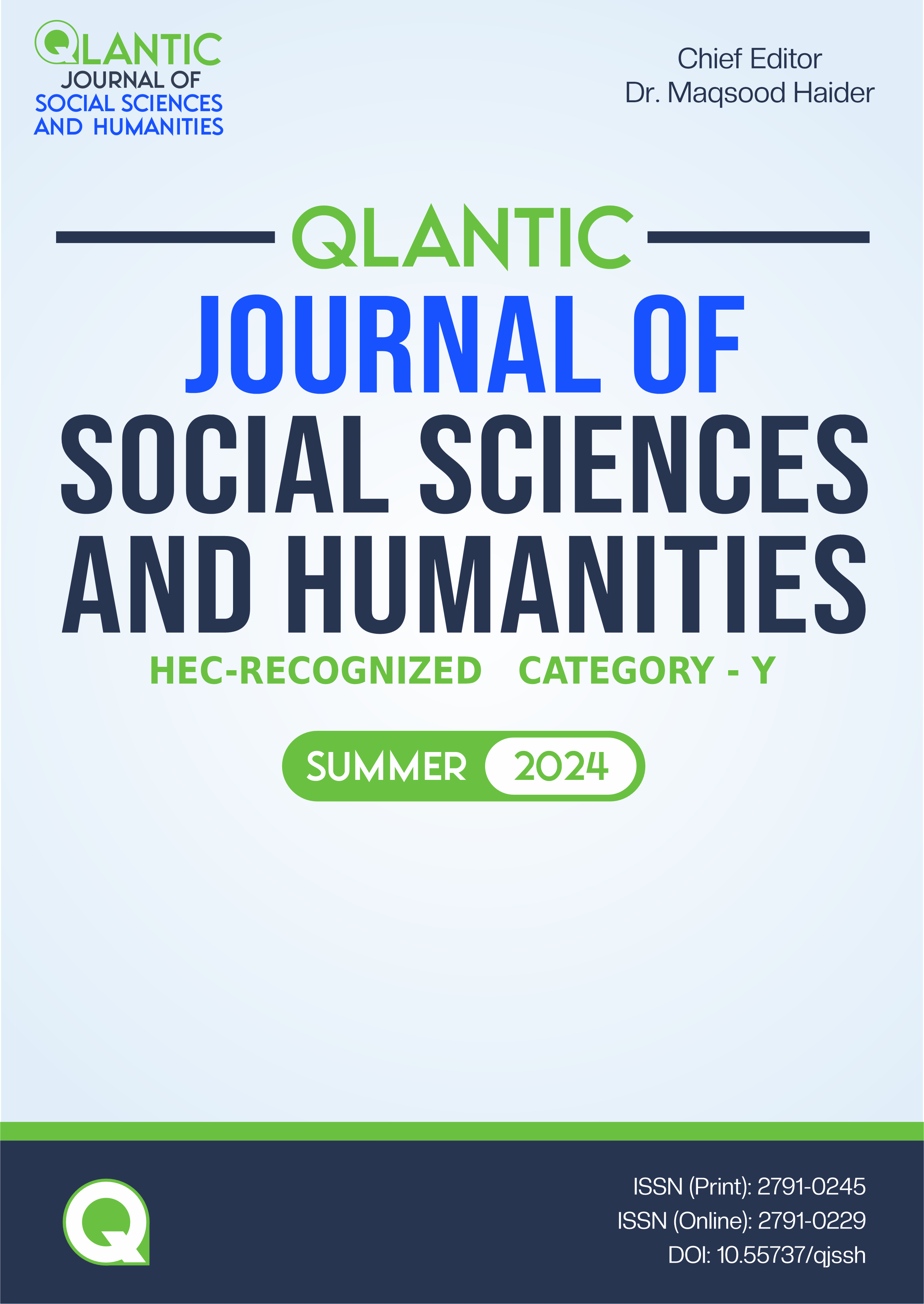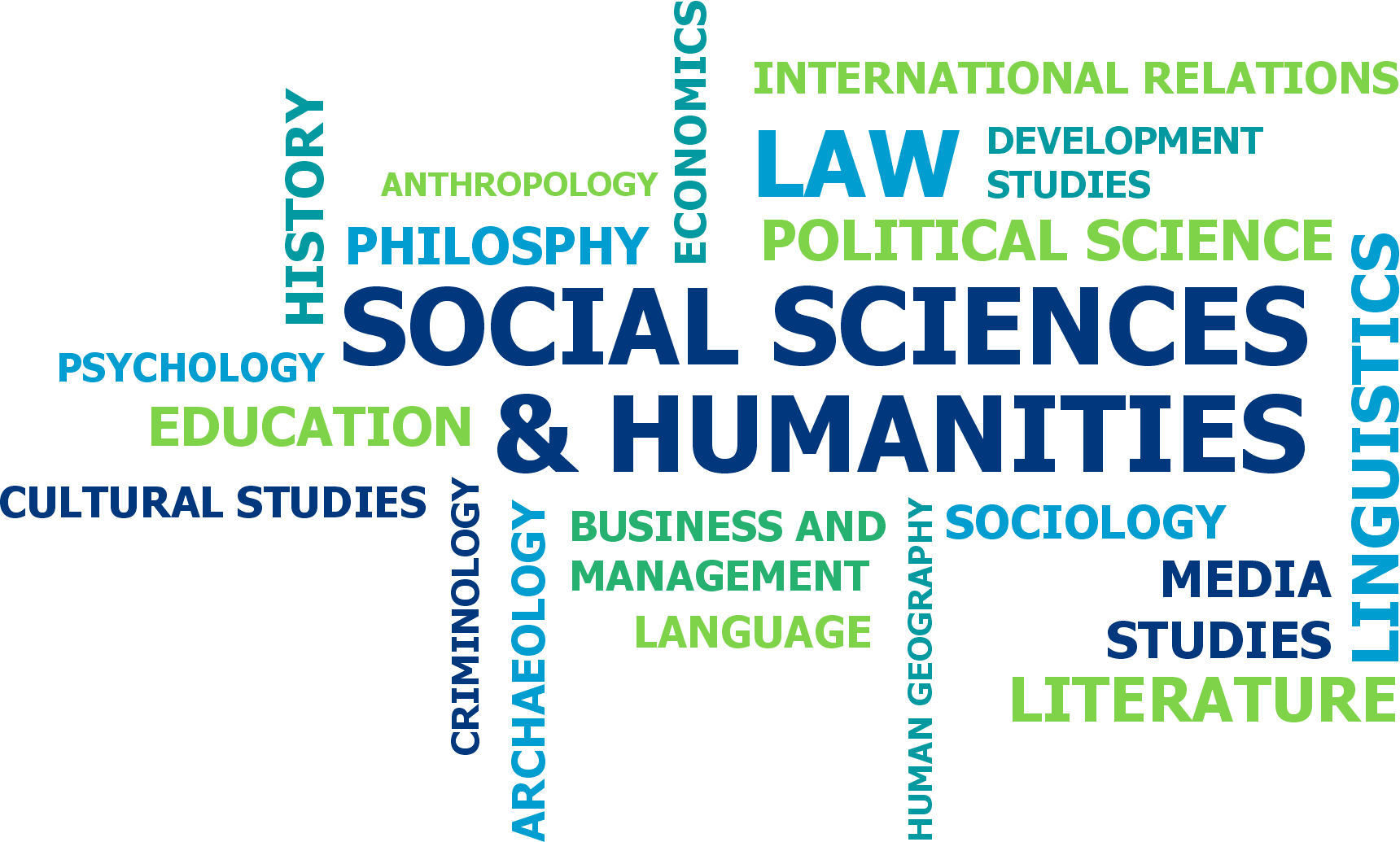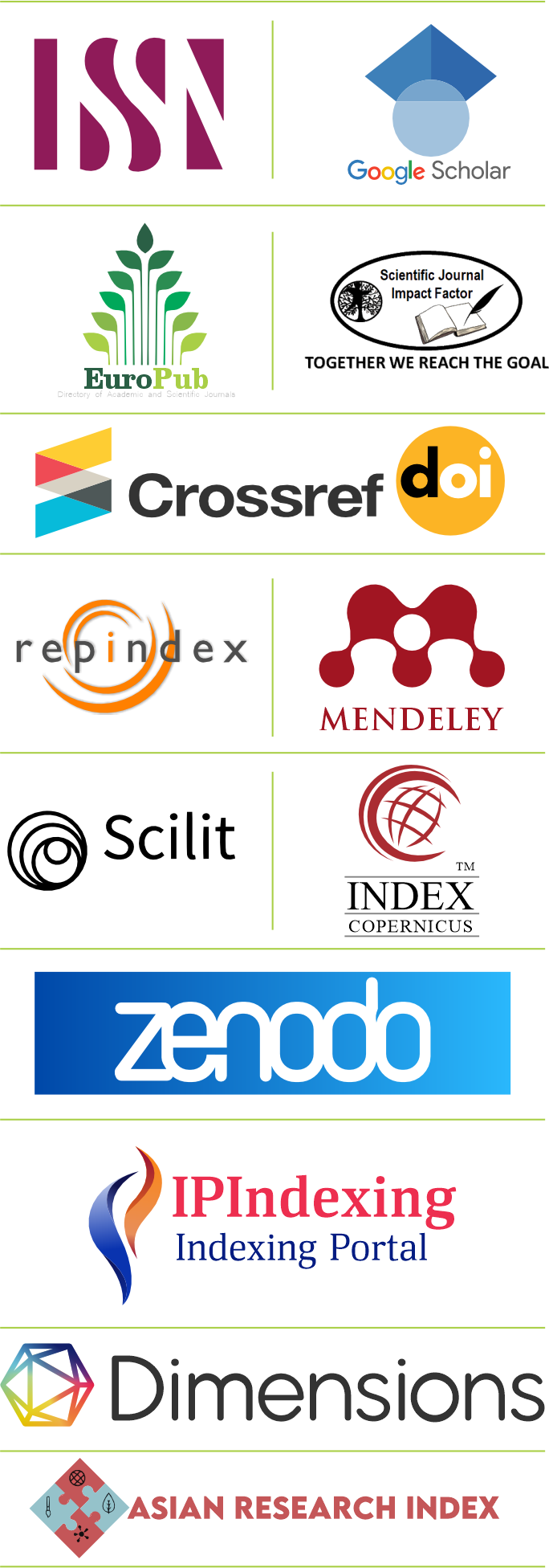Teaching Spaces in Pakistan: A Case of English Language Learning Skills at Tertiary Level
DOI:
https://doi.org/10.55737/qjssh.579341510Keywords:
Teaching Space, Language Learning, Tertiary Education, Gender Inequality, Study SupportAbstract
This study examines English language learning skills among students at the tertiary level, specifically in teaching spaces. A quantitative approach has been used in this study. The students of the BS (4 Years) program constitute the population of the study. Cross-sectional research was undertaken, and a structured questionnaire was used to collect the data. The measuring tool consists of different variables, including identification, socio-demographic characteristics, teaching spaces, and English language learning skills. A pilot test was done on 25 randomly selected students, and the value of Alpha was reported as above .721. A statistics analysis includes the Chi-Square test and Independent Sample T-test. The findings of the study revealed that the teaching spaces have a favourable effect on English language learning skills among students at the tertiary level. The results of Chi-Square confirm an association between variables (teaching spaces and English language learning skills). Similarly, the independent sample T-test asserts that there is a significant difference in physical infrastructure, presentation assignment activity, and study support material among male and female students for English language learning in higher education in Pakistan.
References
Abongdia, J.-F. A., & Mpiti, T. (2015). Learners’ Experiences of Writing in English as a First Additional Language. International Journal of Educational Sciences, 11(1), 91–96. https://doi.org/10.1080/09751122.2015.11890378
Anwar, B., Shoaib, M., & e-Mustafa, R. -. (2022). Factors Influencing Students’ Willingness to Use Academic Library after COVID-19 Lockdown. International Information & Library Review, 35(2), 1–7. https://doi.org/10.1080/10572317.2022.2089528
Anwar, B., Shoaib, M., & Shahid, U. (2024). Academic Performance of the Students in Higher Education in Pakistan: The Role of Information and Communication Technology. Pakistan Social Sciences Review, 8(2), 472–482. https://doi.org/10.35484/pssr.2024(8-II-S)41
Ardasheva, Y., Norton-Meier, L., & Hand, B. (2015). Negotiation, embeddedness, and non-threatening learning environments as themes of science and language convergence for English language learners. Studies in Science Education, 51(2), 201–249. https://doi.org/10.1080/03057267.2015.1078019
Argaman, O., & Abu-Rabia, S. (2002). The Influence of Language Anxiety on English Reading and Writing Tasks Among Native Hebrew Speakers. Language, Culture and Curriculum, 15(2), 143–160. https://doi.org/10.1080/07908310208666640
Bekele Sime, T., Gencha, M. G., & Olamo, T. G. (2024). Effects of Blended Instruction on students’ paragraph writing performances: the case of first year Health science pharmacy students at Pharma College Hawassa Campus, Ethiopia. Cogent Education, 11(1), 2321309. https://doi.org/10.1080/2331186x.2024.2321309
Cutler, L., Schachter, R. E., Gabas, C., Piasta, S. B., Purtell, K. M., & Helsabeck, N. P. (2022). Patterns of Classroom Organization in Classrooms Where Children Exhibit Higher and Lower Language Gains. Early Education and Development, 34(5), 1–19. https://doi.org/10.1080/10409289.2022.2106766
Fang, X. (2023). English-language creative writing in a Chinese context: translation as a supplement. New Writing, 20(4), 1–19. https://doi.org/10.1080/14790726.2023.2185262
Fathi, J., & Rahimi, M. (2020). Examining the impact of flipped classroom on writing complexity, accuracy, and fluency: a case of EFL students. Computer Assisted Language Learning, 35(7), 1–39. https://doi.org/10.1080/09588221.2020.1825097
Gan, Z. (2013). Understanding English speaking difficulties: an investigation of two Chinese populations. Journal of Multilingual and Multicultural Development, 34(3), 231–248. https://doi.org/10.1080/01434632.2013.768622
Gok, D., Bozoglan, H., & Bozoglan, B. (2021). Effects of online flipped classroom on foreign language classroom anxiety and reading anxiety. Computer Assisted Language Learning, 36(4), 1–21. https://doi.org/10.1080/09588221.2021.1950191
Goodrich, S., Mudrick, H., & Robinson, J. (2015). The Transition from Early Child Care to Preschool: Emerging Toddler Skills and Readiness for Group-Based Learning. Early Education and Development, 26(7), 1035–1056. https://doi.org/10.1080/10409289.2015.1006978
Guardino, C. A., & Fullerton, E. (2010). Changing Behaviors by Changing the Classroom Environment. TEACHING Exceptional Children, 42(6), 8–13. https://doi.org/10.1177/004005991004200601
Jiménez-Castellanos, O., Blanchard, J., Atwill, K., & Jiménez-Silva, M. (2014). Beginning English Literacy Development and Achievement Among Spanish-Speaking Children in Arizona’s English-Only Classrooms: A Four-Year Two-Cohort Longitudinal Study. International Multilingual Research Journal, 8(2), 104–123. https://doi.org/10.1080/19313152.2013.875812
Jindapitak, N., Teo, A., & Savski, K. (2022). Bringing Global Englishes to the ELT classroom: English language learners’ reflections. Asian Englishes, 24(3), 1–15. https://doi.org/10.1080/13488678.2022.2033910
Luchtel, M., Hughes, K., Luze, G., Bruna, K. R., & Peterson, C. (2010). A Comparison of Teacher-Rated Classroom Conduct, Social Skills, and Teacher–Child Relationship Quality Between Preschool English Learners and Preschool English Speakers. NHSA Dialog, 13(2), 92–111. https://doi.org/10.1080/15240751003737877
Ma’azi, H., & Janfeshan, K. (2018). The effect of Edmodo social learning network on Iranian EFL learners writing skill. Cogent Education, 5(1), 1536312. https://doi.org/10.1080/2331186x.2018.1536312
Mahfouz, S. M., & Ihmeideh, F. M. (2009). Attitudes of Jordanian university students towards using online chat discourse with native speakers of English for improving their language proficiency. Computer Assisted Language Learning, 22(3), 207–227. https://doi.org/10.1080/09588220902920151
Manning-Lewis, T. (2019). I Hate Writing: Making a Case for the Creation of Graphic Novels in the Caribbean English Classroom to Develop Students’ Creative Writing Skills. Changing English, 26(4), 392–404. https://doi.org/10.1080/1358684x.2019.1643228
Mariam, S., Anwar, B., & Shoaib, M. (2022). English for Specific Purposes: An Evaluation of 8Th Class Textbook of English. Jahan-e-Tahqeeq, 5(2), 112-119. https://jahan-e-tahqeeq.com/index.php/jahan-e-tahqeeq/article/view/631
Mariam, S., Anwar, B., Shoaib, M., & Rasool, S. (2021). Literacy and Numeracy Drive: An Evaluation of Class Three English Textbook of Punjab. Journal of Critical Reviews, 8(2), 938-946. http://dx.doi.org/10.31838/jcr.08.02.97
Min, Q., Wang, Z., & Liu, N. (2018). Integrating a cloud learning environment into English-medium instruction to enhance non-native English-speaking students’ learning. Innovations in Education and Teaching International, 56(4), 493–504. https://doi.org/10.1080/14703297.2018.1483838
Quadir, B., Yang, J. C., & Wang, W. (2022). Factors influencing the acquisition of English skills in an English learning environment using Rain Classroom. Interactive Learning Environments, 32(2), 1–19. https://doi.org/10.1080/10494820.2022.2075015
Qutob, M. M. (2018). The Relationship between EFL Learners' Satisfaction within the Classroom Environment and Their Speaking Skills. English Language Teaching, 11(7), 116-124. http://dx.doi.org/10.5539/elt.v11n7p112
Quvanch, Z., & Si Na, K. (2022). Evaluating Afghanistan University students’ writing anxiety in English class: An empirical research. Cogent Education, 9(1), 2040697. https://doi.org/10.1080/2331186x.2022.2040697
Safari, P. (2020). Constructing an emancipatory learning environment in Iranian English classes through dialogue journal writing as an educational tool. Education 3-13, 49(5), 618–634. https://doi.org/10.1080/03004279.2020.1757736
Samiullah, & Haidar, S. (2023). English Writing and Social Stratification in Pakistan: Exploring the Role of SES on Students’ Writing. Reading & Writing Quarterly, 39(4), 318-333. http://dx.doi.org/10.1080/10573569.2022.2103056
Schreiber, B., & Mihiri Jansz. (2023). “It’s a language politic”: Sri Lankan English and linguistic hierarchies in the English language classroom. Asian Englishes, 26(2), 1–17. https://doi.org/10.1080/13488678.2023.2216869
Shadiev, R., Hwang, W.-Y., & Huang, Y.-M. (2017). Review of research on mobile language learning in authentic environments. Computer Assisted Language Learning, 30(3-4), 284–303. https://doi.org/10.1080/09588221.2017.1308383
Shoaib, D. M., Anwar, D. B., & Rasool, D. S. (2022). Factors Affecting EFL Teaching Skills at Higher Education Institutions in Pakistan: An Analysis of Teachers’ Perspective . Pakistan Journal of Language Studies, 6(1), 1-15. https://pjls.gcuf.edu.pk/index.php/pjls/article/view/156
Shoaib, M., Ali, N., Anwar, B., & Abdullah, F. (2022). Library services and facilities in higher education institutions during coronavirus disease (COVID-19) in Pakistan. Journal of Information Science, 1–14. https://doi.org/10.1177/01655515221141035
Shoaib, M., Ali, N., Anwar, B., & Shaukat, B. (2021). Plotting the Literature on Learning Outcomes and Academic Performance in Higher Education from 2001 to 2020: A Scientometric Analysis. Library Philosophy and Practice, 5919, 1-24. https://digitalcommons.unl.edu/libphilprac/5919
Shoaib, M., Ali, N., Anwar, B., Rasool, S., Mustafa, R.-e., & Zici, S. (2021). Research Visualization on Teaching, Language, Learning of English and Higher Education Institutions from 2011 to 2020: A Bibliometric Evidences Library Philosophy and Practice, 5677, 1-27. https://digitalcommons.unl.edu/libphilprac/5677
Shoaib, M., Anwar, B., & Mustafa, R. (2022). Moral Literacy and Islamic Values among Students at Tertiary Level. Al-Āfāq Islamic Research Journal, 2(2), 1–11. http://alaafaqjournal.com/index.php/alaafaq/article/view/67
Shoaib, M., Rasool, S., & Anwar, B. (2021). Evaluating Research Support Facilities to University Students during COVID-19. Library Philosophy and Practice, 4953(1), 1-18. https://digitalcommons.unl.edu/libphilprac/4953
Shoaib, M., Rasool, S., Anwar, B., & Ali, R. (2023). Academic library resources and research support services to English teachers in higher education institutions. Journal of Electronic Resources Librarianship, 35(1), 17-27. http://dx.doi.org/10.1080/1941126X.2023.2165240
Shoba, K. N. (2017). Mapping Perceptions to Practices: Learning English as a Second Language Inside and Outside the Classroom. International Journal of Educational Sciences, 17(1-3), 88–93. https://doi.org/10.1080/09751122.2017.1305752
Showstack, R. E. (2017). Stancetaking and language ideologies in heritage language learner classroom discourse. Journal of Language, Identity & Education, 16(5), 271-284. http://dx.doi.org/10.1080/15348458.2016.1248558
Sun, S. Y. H. (2014). Learner perspectives on fully online language learning. Distance Education, 35(1), 18–42. https://doi.org/10.1080/01587919.2014.891428
Sun, Z., Lin, C.-H., You, J., Shen, H. jiao, Qi, S., & Luo, L. (2017). Improving the English-speaking skills of young learners through mobile social networking. Computer Assisted Language Learning, 30(3-4), 304–324. https://doi.org/10.1080/09588221.2017.1308384
Sung, C. C. M. (2014). Exposure to multiple accents of English in the English Language Teaching classroom: from second language learners’ perspectives. Innovation in Language Learning and Teaching, 10(3), 190–205. https://doi.org/10.1080/17501229.2014.936869
Thu, N. (2020). Communication skills and reflection practice in smart english teaching and learning environment: a case study. International Journal of Emerging Technologies in Learning (iJET), 15(17), 221-237. http://dx.doi.org/10.3991/ijet.v15i17.15235
Tian, J., & Wang, Y. (2010). Taking language learning outside the classroom: learners’ perspectives of eTandem learning viaSkype. Innovation in Language Learning and Teaching, 4(3), 181–197. https://doi.org/10.1080/17501229.2010.513443
Toyoda, E. (2016). Intercultural knowledge, awareness and skills observed in a foreign language classroom. Intercultural Education, 27(6), 505–516. https://doi.org/10.1080/14675986.2016.1256600
Uztosun, M. S. (2017). The development of a scale for measuring the self-regulated motivation for improving speaking English as a foreign language. The Language Learning Journal, 48(2), 213-225. https://doi.org/10.1080/09571736.2017.1335766
Uztosun, M. S., & Kök, M. (2024). L2 Skill-Specific Anxiety and Communication Apprehension: The Role of Extramural English in the Turkish Context. Innovation in Language Learning and Teaching, 18(1), 17–31. https://doi.org/10.1080/17501229.2023.2217170
van der Ploeg, M., Willemsen, A., Richter, L., Keijzer, M., & Koole, T. (2022). Requests for assistance in the third-age language classroom. Classroom Discourse, 13(4), 386-406. https://doi.org/10.1080/19463014.2021.2013910
Vick, R. M., Crosby, M. E., & Ashworth, D. E. (2000). Japanese and American students meet on the web: Collaborative language learning through everyday dialogue with peers. Computer assisted language learning, 13(3), 199-219. http://dx.doi.org/10.1076/0958-8221(200007)13:3;1-3;FT199
Vurdien, R. (2013). Enhancing writing skills through blogging in an advanced English as a Foreign Language class in Spain. Computer Assisted Language Learning, 26(2), 126–143. https://doi.org/10.1080/09588221.2011.639784
Wan, Z. H., & Cheng, M. H. M. (2018). Classroom learning environment, critical thinking and achievement in an interdisciplinary subject: a study of Hong Kong secondary school graduates. Educational Studies, 45(3), 285–304. https://doi.org/10.1080/03055698.2018.1446331
Wang, Y., & Chen, N.-S. (2009). Criteria for evaluating synchronous learning management systems: Arguments from the distance language classroom. Computer assisted language learning, 22(1), 1-18. http://dx.doi.org/10.1080/09588220802613773
Waring, H. Z., & Yu, D. (2016). Life outside the classroom as a resource for language learning. The Language Learning Journal, 46(5), 660–671. https://doi.org/10.1080/09571736.2016.1172332
Weger, H. (2013). International students’ attitudes toward L2-English classroom activities and language skills in the USA. Innovation in Language Learning and Teaching, 7(2), 139–157. https://doi.org/10.1080/17501229.2012.733007
Wong, A. F., Quek, C.-L., Divaharan, S., Liu, W.-C., Peer, J., & Williams, M. D. (2006). Singapore students’ and teachers’ perceptions of computer-supported project work classroom learning environments. Journal of Research on Technology in Education, 38(4), 449-479. http://dx.doi.org/10.1080/15391523.2006.10782469
Wongsa, M., & Son, J.-B. (2020). Enhancing Thai secondary school students’ English speaking skills, attitudes and motivation with drama-based activities and Facebook. Innovation in Language Learning and Teaching, 16(1), 41-52. https://doi.org/10.1080/17501229.2020.1853134
Yakob, S., Jawawi, R., Shahrill, M., & Jaidin, J. H. (2023). The Effects of Flipped Classroom in English Language Communicative Skills. International Journal of Essential Competencies in Education, 2(2), 88–127. https://doi.org/10.36312/ijece.v2i2.1394
Yang, Q., Zimmermann, K., Bartholomew, C. P., Purtell, K. M., & Ansari, A. (2023). Preschool Classroom Age Composition and Physical Literacy Environment: Influence on Children’s Emergent Literacy Outcomes. Early Education and Development, 1–18. https://doi.org/10.1080/10409289.2023.2247953
Yang, X., Zhou, X., & Hu, J. (2022). Students’ preferences for seating arrangements and their engagement in cooperative learning activities in college English blended learning classrooms in higher education. Higher Education Research & Development, 41(4), 1356-1371. https://doi.org/10.1080/07294360.2021.1901667
Yoon, B. (2020). English language learners’ language and literacy development: A brief synopsis of major theoretical orientations for middle school teachers. Middle School Journal, 52(1), 23–29. https://doi.org/10.1080/00940771.2020.1840270
Zano, K. (2020). From the teachers’ perspectives: resources used in teaching reading comprehension to English First Additional Language (EFAL) learners in the FET phase. International Journal of Inclusive Education, 27(3), 376–388. https://doi.org/10.1080/13603116.2020.1858979
Zedan, R. (2010). New dimensions in the classroom climate. Learning Environments Research, 13(1), 75-88. http://dx.doi.org/10.1007/s10984-009-9068-5
Downloads
Published
Issue
Section
License
Copyright (c) -1 Hafiza Kashaf Arshad, Dr. Behzad Anwar, Dr. Muhammad Shoaib

This work is licensed under a Creative Commons Attribution-NonCommercial 4.0 International License.





